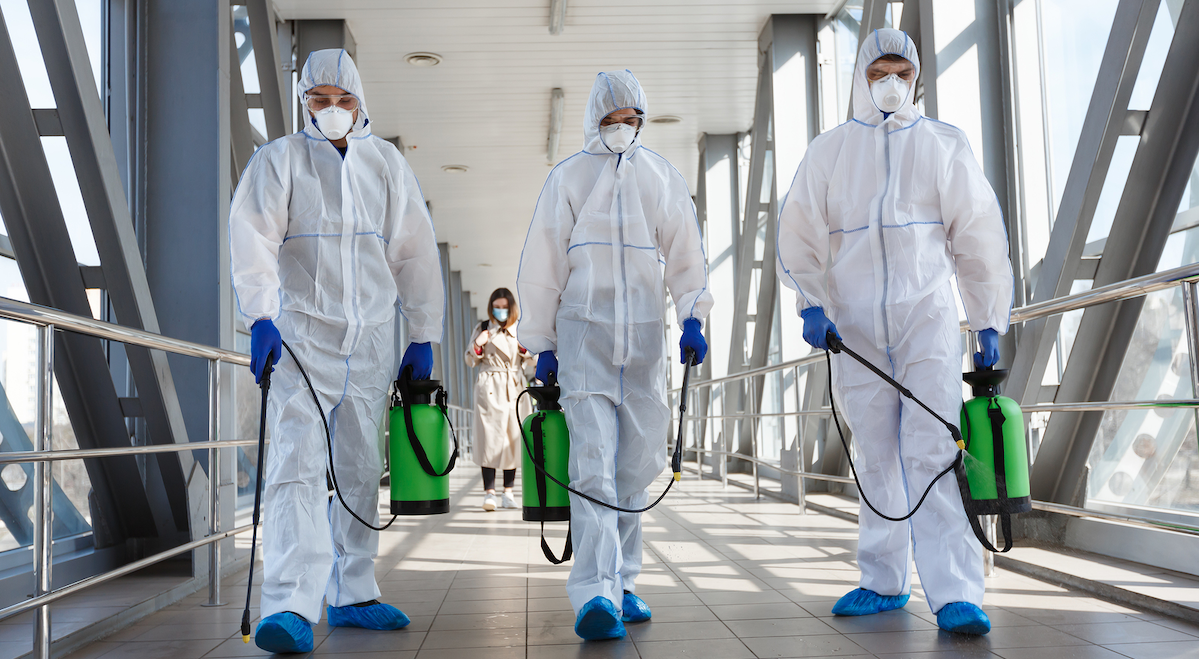For business owners, commercial disinfecting is an important part of keeping your office clean and healthy. It’s a process that many people aren’t familiar with, so we’ve put together a list of 9 surprising facts about commercial disinfecting.
Let’s get started!
1. There is a difference between sanitizing and disinfecting.
Sanitizing reduces the number of germs on a surface while disinfecting kills the germs. Commercial disinfecting is done with chemicals that are approved by the EPA. Disinfecting surfaces is important, but it’s also important to disinfect areas that get a lot of traffic, like door handles and light switches.
2. Sanitizers and disinfectants are safe for your health.
The chemicals used in commercial disinfecting are safe for humans and animals. However, it’s important to follow the directions on the label and use the product as intended.
Some products should not be used around food, so be sure to read the label carefully. You should be mindful of ventilation when using commercial disinfecting products and always wear gloves.
An important part of commercial disinfecting is keeping the area ventilated. This helps to prevent the spread of harmful germs and also prevents you from inhaling any chemicals.
When commercial cleaning services come to your office, they will take all of these precautions to ensure your safety when it comes to disinfecting illness-causing germs.
3. It’s important to sanitize and disinfect OFTEN!
You should sanitize and disinfect your office on a regular basis. This helps to prevent the spread of germs and keeps everyone in the office healthy.
There are a few things you can do to make sure your office is always clean and healthy:
-Wipe down surfaces with a disinfectant regularly
-Vacuum and mop floors regularly
-Empty trash cans often
-Clean bathrooms daily
By following these simple tips, you can help to keep your office clean and healthy. commercial cleaning services can also help you keep your office clean and healthy and can help you develop a schedule that works for your office.
4. Cleaning is recommended before disinfecting
You should always clean surfaces before you disinfect them. This helps to remove any dirt or debris that could be blocking the disinfectant from doing its job.
Once surfaces are clean, you can then apply a disinfectant. Be sure to follow the directions on the label and only use as much as directed.
5. Bleach can be used as a disinfectant but is not appropriate for all surfaces
Bleach can damage some surfaces, so it’s important to read the label carefully before using it. Examples of surfaces that bleach can damage are :
-Wood
-Leather
-Fabric
If you’re not sure if it’s safe to use bleach on a particular surface, you can always test it in an inconspicuous area first.
If you do decide to use bleach, be sure to follow the directions on the label and always wear gloves. You should also be mindful of ventilation when using bleach.
6. Nervous to use bleach? Try isopropyl alcohol.
Isopropyl alcohol can be used as a disinfectant on many surfaces. It’s a good alternative to bleach and is less likely to damage surfaces. Most disinfectants and sanitizers feature 70% alcohol, but you can also find products with 91% alcohol.
However, it’s important to note that alcohol does not kill all types of germs. You should always read the label carefully before using any product and follow the directions as directed.
7. Vinegar can be used, sometimes…
Vinegar can be used as a disinfectant on some surfaces, but it’s important to know that it doesn’t work on all types of germs. It’s also not as effective as other commercial disinfectants.
If you decide to use vinegar, be sure to use distilled white vinegar and always follow the directions on the label. Vinegar will not be effective against viruses such as COVID-19 or the flu, and are not a suitable substitute for EPA-registered disinfectants.
8. Electrostatic fogging to the rescue.
Electrostatic fogging is a commercial disinfecting method that uses an electrostatically charged mist to apply disinfectant to surfaces. This mist clings to surfaces and provides 360-degree coverage, so you can be sure that all surfaces are properly disinfected.
Electrostatic fogging is a quick and effective way to disinfect large areas and can be used in both commercial and residential settings.
Fogging is not new but has seen an increase in popularity in recent years, especially in commercial settings. With the risk of COVID-19, many companies like Canadian Mobile Wash, have added this service to their suite of offerings so that businesses like yours can continue to operate day-to-day. Almost every commercial cleaning company should offer this service if they take cleaning seriously!
9. Myths about disinfection
Many people believe that cleaning doesn’t need to be done if there is a disinfecting procedure in place. This is incorrect because cleaning and disinfecting are two different things.
Cleaning removes dirt, debris, and other contaminants from surfaces. Disinfecting kills germs that are present on surfaces. Both cleaning and disinfecting are important in order to keep surfaces clean and safe.
Without cleaning, you leave the risk of bacteria and other germs being present on surfaces. Cleaning should always be done before disinfecting because skipping this can lead to illness and disease.
What other commercial disinfecting facts would you like to know? Let us know in the comments!










